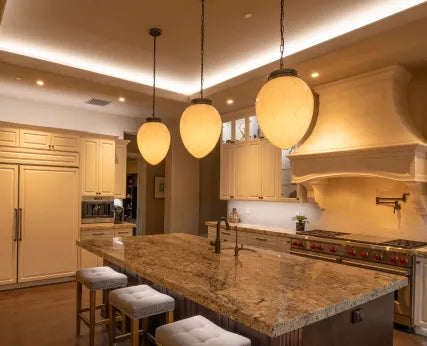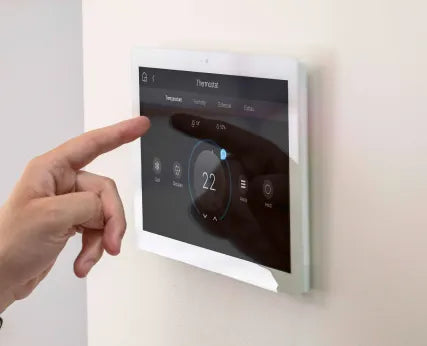In today’s fast-paced world, smart home technology can be a game changer—streamlining daily routines, enhancing comfort, and increasing security without requiring complex setups or coding skills. Imagine over 100 automations running seamlessly behind the scenes, making life easier and more enjoyable. Here, we’ll explore 10 straightforward home automation ideas that anyone can implement using popular smart home platforms like Home Assistant. These automations cover lighting, ceiling fans, door locks, laundry, window shades, grocery shopping, climate control, and even keeping pesky animals off your lawn. Each offers practical benefits and can be tailored to your lifestyle.
1. Automate Lighting in Windowless Rooms
Rooms without windows—like laundry rooms, storage closets, or outdoor sheds—often rely on manual light switches, which can be inconvenient. A simple yet effective automation involves replacing a traditional wall switch with a smart switch and adding a door contact sensor. When you open the door, the contact sensor triggers the smart switch to turn the light on; closing the door switches it off.
For example, pairing a Zeus ZSC41 contact sensor with a Zeus Zen76 smart switch allows hands-free lighting control in walk-in closets. Similarly, Ring contact sensors work well in laundry rooms or sheds. These devices typically use Z-Wave connectivity and integrate smoothly with Home Assistant, making setup straightforward.
This automation not only saves time but also reduces energy waste by ensuring lights aren’t left on unintentionally.
2. Motorized Shades for Light and Privacy Control
Motorized window shades offer much more than convenience—they provide automated control over sunlight, privacy, and room ambiance. You can program shades to open at sunrise and close at sunset to sync with natural light cycles. When watching movies or recording videos, closing the shades creates a perfect theater-like environment or consistent lighting.
Other smart shade triggers include:
-
Closing bathroom shades during showers, detected via humidity sensors.
-
Opening shades when entering a room.
-
Closing shades when no one is home, based on presence detection.
Many brands like Lutron, Smart Wings, Smartwave, Switchbot, and Zmot offer motorized shades that integrate well with Home Assistant, ensuring reliable operation.
3. Innovative Wireless Control for Ceiling Fans
Ceiling fans, especially DC-powered ones with built-in lights, often come with limited control options. By connecting fans to a Bond bridge and replacing traditional wall switches with smart scene controllers (such as the Zeus Zen32), you gain centralized control over fan speed, lighting, and even additional room lights.
Automation shines here: motion and temperature sensors can automatically turn fans on when a room feels too warm and motion is detected, helping reduce air conditioner usage and saving energy. Additionally, millimeter wave presence sensors can switch fans off after a period of no detected human presence—though sensor placement is crucial to avoid false positives caused by fan movement.
4. Smart Locks That Welcome You Home
Imagine your front door unlocking automatically as you arrive—without compromising security. By combining a smart lock with geo-fencing and Wi-Fi connection detection, your door can unlock only when you have both left and re-entered the home’s geo-fence and your phone is connected to the home Wi-Fi. This dual verification prevents accidental unlocks and enhances safety.
Notifications sent to your phone confirm every unlock event, keeping you informed. Additional automations can lock the door at a designated time each night, with backup rules to relock the door if it’s manually unlocked after hours, preventing unwanted entry.
5. Battery Level Alerts to Prevent Device Failures
Battery-powered sensors and devices are vital to many automations, but dead batteries can cause frustrating downtime or security risks. Setting up an automation that sends daily alerts if any device’s battery falls below 20% ensures you never get caught off guard.
You can customize this notification system by excluding certain devices (like phones) to avoid unnecessary alerts. This simple measure maintains the reliability of your smart home ecosystem.
6. Laundry Notifications to Save Time and Reduce Noise
Traditional washing machines and dryers lack smart features but can be cleverly integrated into your automation system. Using a smart plug with energy monitoring on the washer and a vibration sensor on the dryer, you can detect when cycles start and finish.
Instead of relying on inaccurate phone timers or disruptive machine beeps, you receive phone alerts and voice announcements via smart speakers when laundry is done. These announcements can be muted during kids’ nap times to maintain a peaceful environment.
7. Shared Grocery Lists with Location-Based Reminders
Managing grocery shopping becomes effortless when your smart home notifies you the moment you enter the store. By creating a geo-fenced zone around your favorite grocery store and enabling location access on your phone’s companion app, you receive an instant notification with a tappable link to your shared grocery list.
This feature streamlines shopping trips, prevents forgotten items, and keeps everyone on the same page.
8. Protect Your Lawn with Smart Irrigation Triggered by Animal Detection
If your yard suffers from nighttime visits by raccoons, foxes, possums, or stray cats, conventional deterrents may fail. Combining smart irrigation control with motion-activated cameras equipped with animal detection can help.
When cameras detect animal movement at night, the irrigation system briefly runs, using water and noise to chase intruders away. This creative use of existing smart home equipment protects your lawn and keeps your kids’ play area clean and safe.
9. HVAC Energy Savings by Pausing When Doors or Windows Are Open
Heating or cooling your home while doors or windows are open wastes energy. An automation that pauses the HVAC system if any door or window remains open for 30 seconds can prevent this.
By using a smart thermostat integrated with contact sensors on all entry points, and grouping these sensors in Home Assistant, you create a seamless system that automatically pauses climate control. This lets you open windows freely without worrying about energy loss or manually adjusting the thermostat.
10. Introducing a No-Wire Smart Switch for Easy Integration
One standout product in smart home tech is a wireless smart switch that attaches mechanically to existing toggle or rocker switches—no electrical wiring needed. This slim device fits even in multi-gang setups and can control lights, fans, gas fireplaces, and more.
Connected via the latest Matter-over-Thread protocol, it creates a robust mesh network, reducing Wi-Fi interference. Battery-powered with a one-year lifespan, this switch offers a simple way to modernize your home controls and enable automations, such as turning on ceiling fans automatically when rooms get too warm.
Final Thoughts: Start Small, Think Big
These 10 easy-to-implement automations demonstrate how smart home technology doesn’t have to be complicated or expensive to add meaningful value. From improving energy efficiency and security to enhancing comfort and convenience, each automation frees up time and mental energy.
Starting with simple triggers like door sensors or energy monitors, you can build a smart home ecosystem that adapts to your lifestyle—making everyday tasks effortless and your home a happier place.
What simple automations have transformed your daily routine? Or what advanced ideas are you excited to explore next? Share your experiences and questions to keep the conversation going.
Ready to enhance your home? Explore smart switches, sensors, and automation platforms compatible with Home Assistant to start creating your own time-saving routines today. Small changes lead to big improvements!




